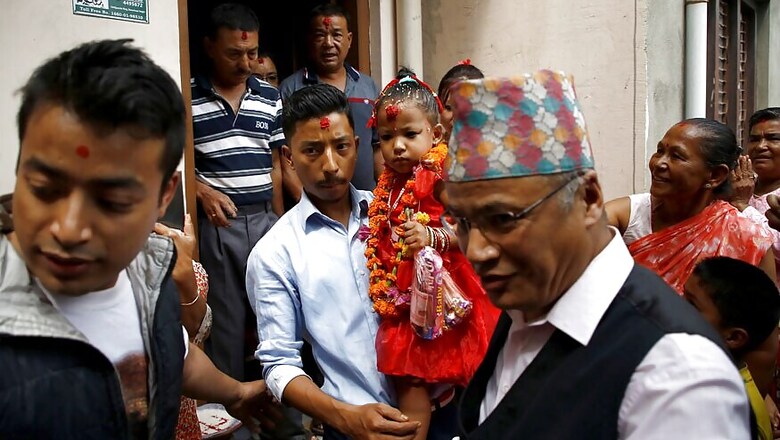
views
Kathmandu: A three-year-old girl was anointed the new Kumari of Kathmandu by Hindu priests on Thursday in a ritual that will see her worshipped as a "living goddess" until she reaches puberty.
Wearing a red dress, Trishna Shakya was taken from her home to an ancient palace in the Nepalese capital's historic Durbar Square where her initiation began with a short ceremony.
She was then carried by her father across the cobbled square -- which still bears the scars of a powerful earthquake that hit in 2015 -- to the Kumari's palace where she will live under the care of specially-appointed guardians.
Flanked by her family and barefoot men in red tunics, the short walk was the last time the three-year-old will be seen in public without the elaborate makeup of the Kumari until puberty, when she will become a normal girl once again.
"I have mixed feelings. My daughter has become the Kumari and it is a good thing. But there is also sadness because she will be separated from us," her father Bijaya Ratna Shakya told AFP.
As the Kumari, Shakya is considered the embodiment of the Hindu goddess Taleju and will only be allowed to leave the temple 13 times a year on special feast days.
At midnight, Hindu priests will perform an animal sacrifice, which the new Kumari will attend as part of her initiation as a "living goddess".
Historically, 108 buffalo, goats, chickens, ducks and eggs were slaughtered as part of the ritual -- a number considered auspicious in Hinduism -- but under pressure from animal rights activists fewer animals are now killed.
The tradition of the Kumari, meaning princess in Sanskrit, comes from the Newar community that is indigenous to the Kathmandu Valley.
It blends elements of Hinduism and Buddhism and the most important Kumaris represent each of the three former royal kingdoms of the valley: Kathmandu, Patan and Bhaktapur.
The practice was once closely linked to the royal family but has continued despite the end of Nepal's Hindu monarchy in 2008.


















Comments
0 comment